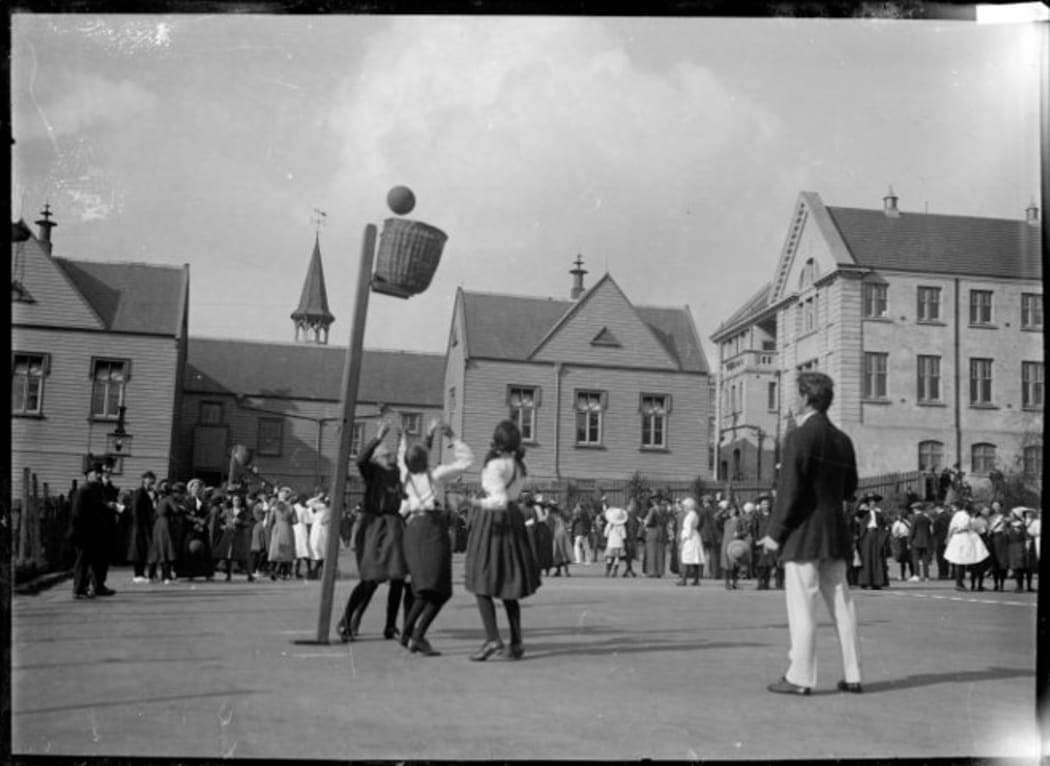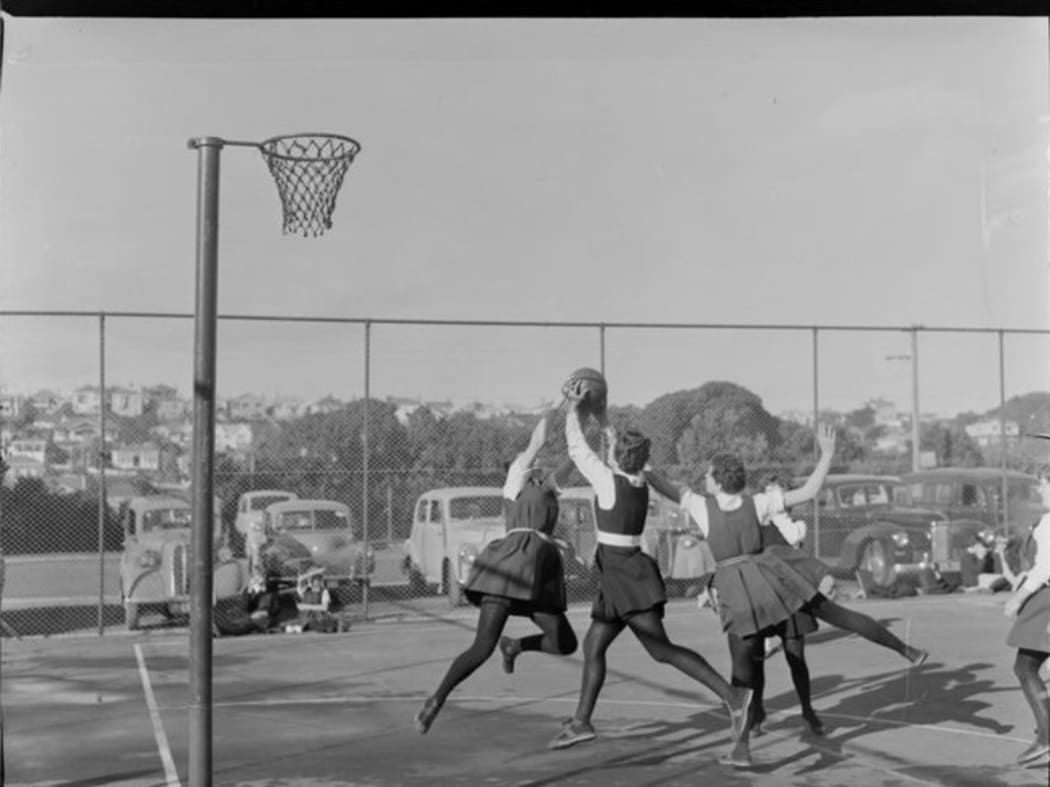From playing nine-a-side ‘basketball’ in gym slips and stockings, to this week’s Silver Ferns World Cup success. Our champion netball team has inspired a visit to the sound archives of Ngā Taonga Sound & Vision.
Netball has been played here since the turn of the 20th century, says Ngā Taonga Sound & Vision’s Sarah Johnston.
“It was introduced in 1906 by church workers who had seen the newly invented game being played in the United States. Back then it was called basketball – was played on grass and the goal posts were topped by an actual basket.”

A game of basketball (later known as netball). Photograph shows a game in progress with the ball about to go into the basket (goal). In the background are spectators and unidentified school buildings. Taken by William A Price circa 1910. Photo: Courtesy Alexander Turnbull Library
Netball quickly became very popular both here and in several countries overseas, but Johnston says the women’s game developed differently in different countries over the next few decades.
This caused some problems.
In interview from 1952 with Eileen Lane, President of the Canterbury Basketball Association explained the difficulties they faced in holding international competitions.
“As far as basketball is concerned each country seems to have its own individual method of play, in 1940, when the Australian team should have come, an English team was invited too and New Zealand appear to make the first move every time, in trying to have an international game. England seems to be content with it’s game of netball and Australia seemed to be quite content with its game of basketball, Canada of course play something quite different, they play the American style basketball which is five aside and very very different than our game.”
Lane says the war put a hold on the meeting the countries were going to have about the game. In the end, the rules were developed in conjunction with Australia with the only difference being Australia had seven a side and New Zealand had nine aside.
New Zealand was loathed to give up its beloved nine a side game, she says.
About 23,000 women, not include schoolgirls, played the game in New Zealand in 1952.
Archival film footage of the 1933 national championships
So when did we finally change to calling it “netball “and seven-a-side teams?
“Teams of seven finally came about in 1960 - and from then it was easier for our teams to compete internationally. The name wasn’t officially changed to netball until 1970,” says Johnston.
“We won the world tournament in Australia in 1967 and then again in 1987 in Glasgow, with a team that featured some legendary names: players Margharet Matenga, Waimarama Taumanu, Rita Fatialofa – and coach Lois Muir.”

Action in gym slips and stockings, Tech Old Girls vs St Mary’s Wellington, 1955 Photo: Alexander Turnbull Library
The tournament was a round robin affair back then – in the final three games New Zealand played Australia first. Beating our trans-Tasman opponents in 1987 was a highlight, says Johnston.
“As a sport played by women, netball has traditionally received a lot less media coverage than men’s – and this includes RNZ back in the day, as is reflected in the archives.
“We don’t have an awful lot of coverage of the 1987 world tournament archived – compared to say a rugby tour. But that success did prompt RNZ to produce an Insight documentary in 1987 looking at the history of netball in this country.
“It’s a bit of a gem - narrated by Kim Hill, it features some great 80s electronic intro music and then some lovely memories by elderly women about playing the sport back in the 1920s and 1930s.”

Photo: Ngā Taonga Sound & Vision

